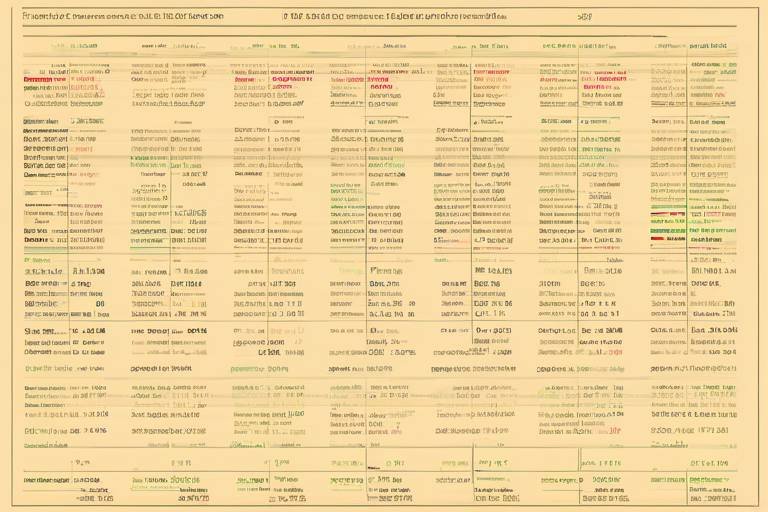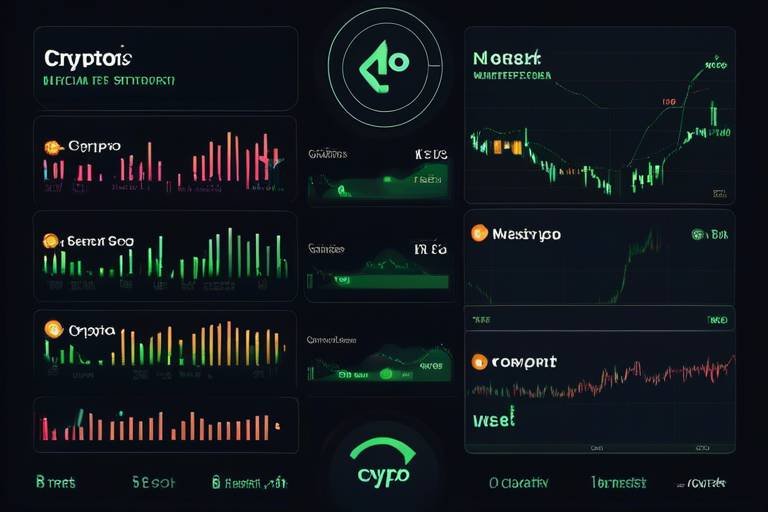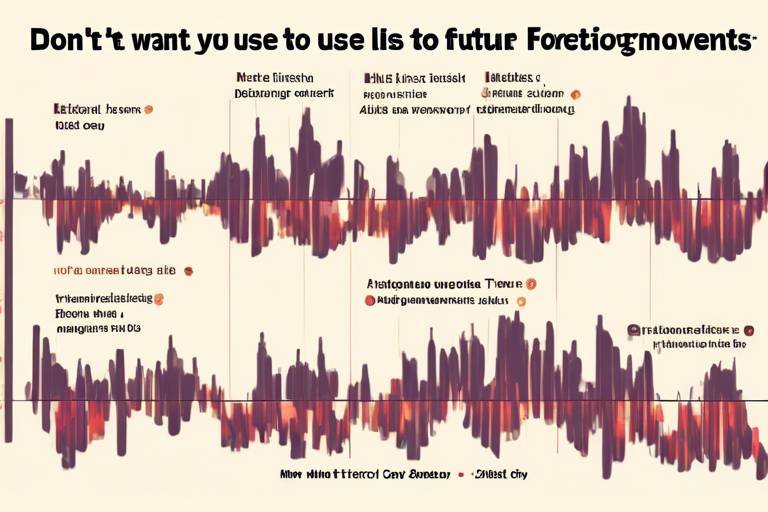How to Use the Average True Range for Risk Assessment
The financial world can feel like a roller coaster ride, with its ups and downs often leaving traders feeling dizzy. One of the most effective tools to help you navigate these twists and turns is the Average True Range (ATR). This article dives deep into how ATR serves as a vital instrument for evaluating market volatility and risk, ensuring that you can make informed decisions in your trading strategy.
So, what exactly is the Average True Range? In simple terms, the ATR is a technical indicator that measures market volatility. It doesn't tell you the direction of the market, but rather how much the price is likely to move over a certain period. Think of it as your financial weather forecast; it won’t predict whether it will rain or shine, but it will tell you how stormy it might get. The ATR is especially useful for traders who are looking to assess the risk associated with a particular asset. By understanding ATR, you can better prepare for those unexpected price movements that can catch you off guard.
Calculating the ATR involves a few specific formulas and data points that might seem daunting at first, but don’t worry! We’ll walk you through it step-by-step. The ATR is usually calculated over a set period, commonly 14 days. The basic formula involves taking the average of the true ranges over that period. But what does that mean? Let’s break it down.
The ATR calculation relies on three key components: the current high, the previous close, and the current low. Understanding these components is crucial, as they each play a significant role in determining market volatility. Here’s how they fit into the equation:
| Component | Description |
|---|---|
| Current High | The highest price reached during the current period. |
| Previous Close | The closing price of the previous period. |
| Current Low | The lowest price reached during the current period. |
Understanding the current high is crucial for ATR calculation. This is the peak price that the asset has reached during the trading period. Identifying this point is like spotting the highest peak in a mountain range; it gives you a reference for how high the market can go. You can find the current high on most trading platforms or financial news websites, and it’s essential for calculating the true range.
The previous close is another vital component of the ATR formula. This is the last price at which the asset traded before the current period began. Think of it as the starting line in a race; it sets the stage for the new trading day. The difference between the previous close and the current high or low can provide insight into market volatility. If the price is far from the previous close, it might indicate increased volatility.
Once you have calculated the ATR, the next step is interpreting its values. A higher ATR indicates greater volatility, while a lower ATR suggests a more stable market. For traders, this means that a high ATR could signal a good opportunity for short-term trades, while a low ATR might suggest a more cautious approach. It’s essential to analyze these readings in conjunction with other indicators to get a comprehensive view of market conditions.
Now that you have a solid understanding of how to calculate and interpret ATR, let’s talk about how to use it for risk management. ATR is an essential tool for determining how much risk you are willing to take on in your trades. It can help you set stop-loss orders and manage your exposure effectively.
Using ATR to set stop-loss orders allows for more informed decision-making. By determining optimal stop-loss levels based on ATR readings, you can protect your investments from unexpected market movements. For instance, if the ATR is high, you might want to set a wider stop-loss to accommodate greater price fluctuations. Conversely, a lower ATR would suggest a tighter stop-loss.
Position sizing is crucial for effective risk management. By using ATR to calculate the appropriate position size based on your risk tolerance, you can ensure that you are not overexposing yourself to potential losses. For example, if your account balance allows for a risk of 1% per trade, you can use the ATR to determine how many shares or contracts you should buy or sell to stay within that risk threshold.
- What is the best period to use for ATR calculation? While 14 days is common, you can adjust the period based on your trading style.
- Can ATR be used for all asset types? Yes, ATR can be applied to stocks, forex, commodities, and cryptocurrencies.
- Is ATR a standalone tool? No, it's best used in conjunction with other technical indicators for a well-rounded analysis.
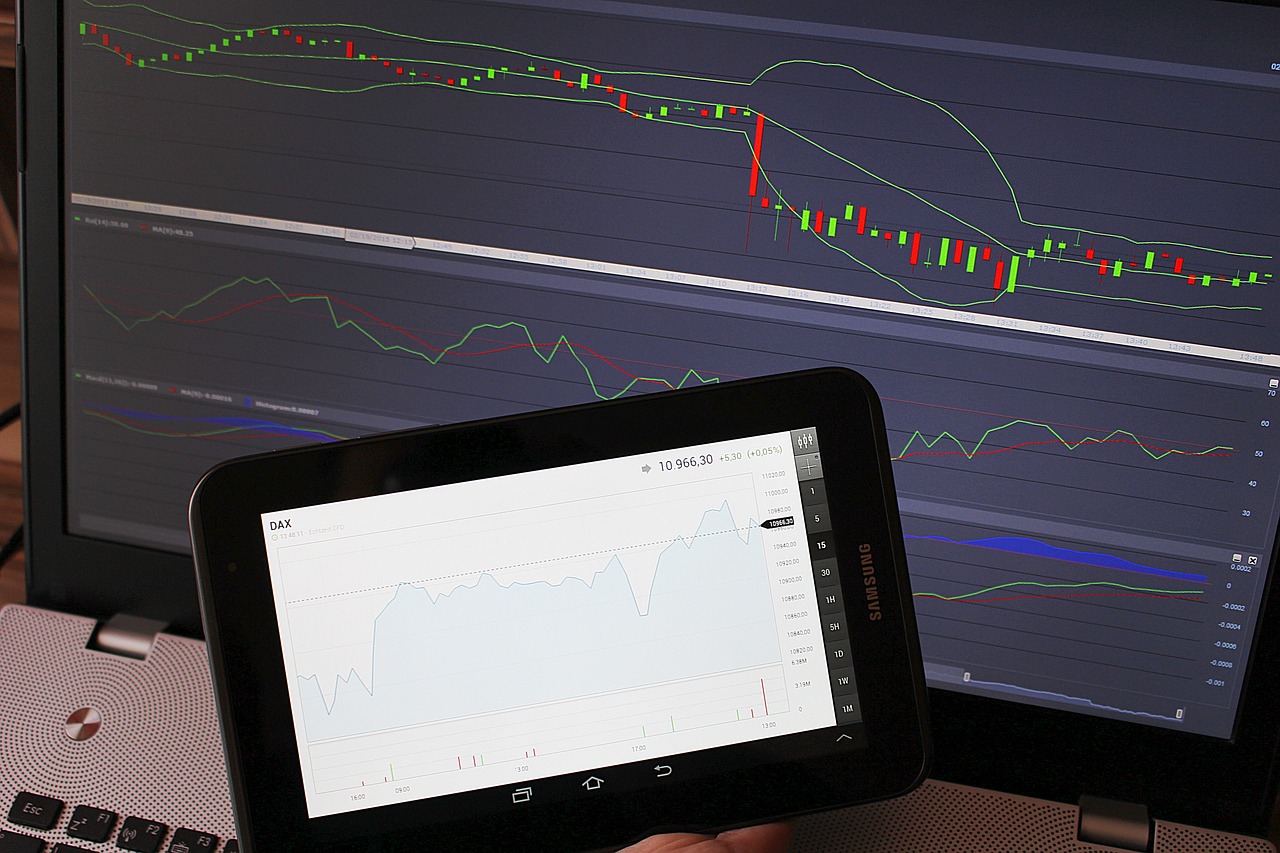
Understanding Average True Range
The Average True Range (ATR) is more than just a fancy term thrown around in trading circles; it’s a powerful tool that helps traders like you understand market volatility. Imagine you’re driving a car on a winding road. The tighter the curves, the more you need to adjust your speed. Similarly, the ATR gives you insights into how much the price of an asset fluctuates over a specific period, allowing you to navigate the financial markets with greater confidence.
So, what exactly is ATR? At its core, ATR is a technical indicator that measures the volatility of an asset by calculating the average of true ranges over a specified time frame. The true range is derived from three key components: the current high, the current low, and the previous close. This means that ATR doesn’t just look at the price movement in isolation; it considers the entire context of price action. This holistic view is what makes ATR a vital part of any trader’s toolkit.
To put it simply, the ATR tells you how much the price of an asset has moved on average during a certain period. A high ATR indicates a lot of price movement and, therefore, greater volatility, while a low ATR suggests that the price is relatively stable. Think of it like a weather forecast: a high ATR is akin to a stormy day with lots of fluctuations, while a low ATR is like a calm, sunny afternoon. Understanding these fluctuations can help you make informed decisions about when to enter or exit a trade.
One of the best aspects of ATR is its adaptability. Whether you're day trading, swing trading, or investing long-term, you can tailor the ATR to fit your strategy. For example, if you’re a day trader, you might look at a shorter time frame, like 14 days, to get a sense of intraday volatility. On the other hand, if you’re a long-term investor, you might analyze the ATR over a longer period, like 50 or 100 days, to capture broader market trends.
In conclusion, understanding the Average True Range is essential for any trader aiming to assess market conditions effectively. By grasping how ATR is calculated and what it signifies, you can make more informed trading decisions that align with your risk tolerance and market strategy. So, as you continue your trading journey, keep an eye on that ATR—it’s a compass that can guide you through the unpredictable waters of the financial markets.

Calculating the ATR
The Average True Range (ATR) is a powerful indicator that traders use to measure market volatility. But how do you actually calculate it? The process might seem a bit daunting at first, but once you break it down, it’s quite straightforward. The ATR is derived from the True Range (TR), which is the greatest of the following three values:
- The difference between the current high and the current low
- The difference between the current high and the previous close
- The difference between the current low and the previous close
Once you've identified the True Range, the ATR is simply the average of these True Range values over a specified period, typically 14 days. This averaging smooths out the volatility, giving you a clearer picture of market conditions.
To calculate the ATR, follow these steps:
- Determine the True Range (TR) using the three values mentioned above.
- Calculate the ATR by averaging the TR over your chosen period. For example, if you’re using a 14-day ATR, you would sum up the TR values for the last 14 days and divide by 14.
Here’s a simple formula to visualize the calculation:
| Period | Current High | Previous Close | Current Low | True Range (TR) |
|---|---|---|---|---|
| Day 1 | $50 | $48 | $47 | $3 |
| Day 2 | $52 | $50 | $49 | $3 |
| Day 3 | $51 | $52 | $50 | $2 |
| Day 4 | $53 | $51 | $50 | $3 |
In this example, you would calculate the ATR by averaging the True Range values over the desired period. So, if you were to average the TR values from Day 1 to Day 4, you would sum them up and divide by 4, giving you a clearer understanding of the market’s volatility during that time frame.
Now, you might be wondering why this is important. Well, understanding how to calculate the ATR not only helps you gauge market volatility but also empowers you to make informed trading decisions. So, whether you’re a seasoned trader or just starting, mastering the ATR calculation is a step toward better risk management and enhanced trading strategies.

Components of ATR Calculation
The Average True Range (ATR) calculation hinges on three essential components: the current high, the previous close, and the current low. Understanding these elements is crucial for anyone looking to leverage ATR in their trading strategies. Each component plays a pivotal role in determining market volatility, and together, they provide a comprehensive picture of price movements.
Let's break down these components to see how they contribute to the ATR calculation:
| Component | Description |
|---|---|
| Current High | The highest price an asset reaches during a specific period. |
| Previous Close | The price at which the asset closed during the previous trading session. |
| Current Low | The lowest price an asset reaches during the same period. |
The current high is particularly significant as it reflects the peak price level that traders are willing to pay. This information is vital because it shows potential resistance levels in the market. For instance, if the current high continues to rise, it may indicate a bullish trend, while a stagnant high could signal market indecision.
Next, we have the previous close. This figure acts as a benchmark from which traders assess market movement. It’s like the starting line in a race; traders look at how the current price compares to the previous close to gauge momentum. If the current price is significantly higher than the previous close, it may suggest strong buying interest, whereas a lower current price could indicate selling pressure.
Lastly, the current low is equally important. This component shows the lowest price point during the period, providing insight into potential support levels. When prices drop to the current low, it can signal a buying opportunity, especially if the asset has a history of bouncing back from similar lows.
In summary, understanding these components is not just about knowing numbers; it’s about interpreting what they mean for market behavior. By analyzing the current high, previous close, and current low, traders can gain valuable insights into market volatility and make more informed decisions.
- What is the Average True Range (ATR)? ATR is a technical indicator that measures market volatility by considering the range of price movements over a specific period.
- How can I use ATR in my trading strategy? ATR can be used to set stop-loss orders, determine position sizes, and evaluate market volatility to make informed trading decisions.
- Is ATR useful in all markets? Yes, ATR can be applied to various markets, including stocks, forex, and commodities, making it a versatile tool for traders.

Current High
The is a critical component in calculating the Average True Range (ATR). It represents the highest price point reached during a specific time frame, and understanding how to identify this value is essential for traders looking to assess market volatility effectively. Imagine you're on a rollercoaster; the current high is that thrilling peak before the exhilarating drop. Just as you wouldn't want to miss that peak moment, in trading, you want to capture the highest price to ensure your calculations reflect the true market dynamics.
To determine the current high, traders often analyze price charts over various time frames, such as daily, weekly, or even intraday charts. This analysis provides a snapshot of market performance and helps traders recognize potential price ceilings. For example, if you're looking at a daily chart, the current high would be the highest price that the asset reached during that trading day. It's important to note that the current high can change frequently, especially in volatile market conditions, so keeping an eye on real-time data is crucial.
In a practical sense, here’s how you can identify the current high:
- Open your trading platform and select the asset you want to analyze.
- Choose the appropriate time frame for your analysis (e.g., daily, hourly).
- Look at the price chart and locate the highest price point within that time frame.
By consistently tracking the current high, you can better understand market trends and make more informed trading decisions. For instance, if the current high is significantly above the previous high, it may indicate a strong bullish trend, while a lack of new highs could suggest weakening momentum. In this way, the current high serves not just as a number but as a vital indicator of the market's health and direction.
In conclusion, grasping the concept of the current high is not just about numbers; it's about understanding the market's pulse. By integrating the current high into your ATR calculations, you can enhance your risk assessment strategies and navigate the complexities of trading with greater confidence.

Previous Close
The is a critical component in calculating the Average True Range (ATR), and understanding its significance can greatly enhance your trading strategy. Essentially, the previous close refers to the last price at which an asset traded before the current trading session begins. This price serves as a benchmark for comparing the asset's current performance, helping traders gauge volatility and market sentiment.
When you look at the previous close, think of it as the starting line in a race. Just like runners assess their positions relative to where they started, traders use the previous close to measure how much the price has moved since the last session. This movement can indicate whether the market is trending upwards, downwards, or remaining stable.
To illustrate the importance of the previous close in ATR calculation, let’s break down its role:
- Volatility Assessment: The previous close allows traders to determine how much the price has fluctuated. If the price opens significantly higher or lower than the previous close, it signals increased volatility, which is essential for risk assessment.
- Trend Analysis: By comparing the previous close with the current price, traders can identify potential trends. A consistent rise or fall from the previous close may indicate a strong trend, whereas a lack of movement may suggest market indecision.
- Setting Expectations: The previous close helps traders set realistic expectations for the day. If the market opens significantly above the previous close, traders might anticipate bullish behavior, while a drop could indicate bearish sentiment.
In summary, the previous close is not just a number; it’s a vital piece of the puzzle that traders use to make informed decisions. By understanding its role in the ATR calculation, you can better assess market conditions and refine your trading strategies.
As you integrate the previous close into your trading analysis, remember that it’s essential to consider other factors, such as market news, economic indicators, and overall market sentiment. Together, these elements will provide a comprehensive view of market volatility and risk, enabling you to make more informed trading decisions.

Interpreting ATR Values
Understanding how to interpret Average True Range (ATR) values is crucial for any trader looking to navigate the often turbulent waters of the financial markets. The ATR provides insights into market volatility, serving as a compass for traders to gauge the strength of price movements. But what do these values really mean? Let's break it down.
ATR values can vary widely depending on the asset and market conditions. Generally, a higher ATR indicates increased volatility, suggesting that the asset is undergoing larger price swings. This can be an indication of heightened risk, but it also presents opportunities for traders who thrive on volatility. Conversely, a lower ATR signals a more stable market environment, which may be suitable for conservative trading strategies.
To put this into perspective, consider the following table that illustrates how ATR values can be categorized:
| ATR Value Range | Market Condition | Implications for Traders |
|---|---|---|
| 0 - 1 | Low Volatility | Stable market; potential for smaller price movements. |
| 1 - 2 | Moderate Volatility | Increased price swings; opportunities for day traders. |
| 2+ | High Volatility | Significant price movements; higher risk and reward. |
These ranges serve as a guideline, but it's essential to consider the context of the asset being traded. For instance, a stock that typically has an ATR of 0.5 may be considered volatile at an ATR of 1.5, while a cryptocurrency might not raise any eyebrows at the same level due to its inherently volatile nature.
Moreover, traders often look for changes in the ATR value over time. An increasing ATR indicates that volatility is rising, which could signal a potential breakout or trend reversal. On the other hand, a declining ATR might suggest that the market is settling down, leading traders to adjust their strategies accordingly. It's akin to watching the weather: a sudden storm (increased ATR) might require you to seek shelter (adjust risk), while a calm day (decreased ATR) could allow for a leisurely stroll (a more relaxed trading approach).
In practice, interpreting ATR values is not just about the numbers; it’s about understanding the market’s pulse. For example, if you notice that the ATR for a particular asset has spiked significantly, it might be wise to reassess your position sizes and stop-loss levels. This proactive approach can help mitigate potential losses during turbulent times.
In conclusion, interpreting ATR values is a blend of art and science. By familiarizing yourself with how these numbers reflect market conditions, you can make more informed trading decisions. Remember, the key is to use ATR as a tool in your broader trading strategy, rather than relying on it in isolation.
What does a high ATR indicate?
A high ATR indicates increased market volatility, suggesting larger price swings and potentially higher risk.
How can I use ATR in my trading strategy?
You can use ATR to set stop-loss orders and determine position sizes based on your risk tolerance, adapting to changing market conditions.
Is ATR suitable for all types of assets?
Yes, ATR can be applied to various asset classes, including stocks, forex, and cryptocurrencies, but interpretations may vary based on the asset’s typical volatility.

Using ATR for Risk Management
The Average True Range (ATR) is not just a number; it’s a powerful ally in the world of trading. When it comes to managing risk, ATR offers insights that can help traders make informed decisions. Imagine you’re sailing a boat; knowing the wind speed and direction is crucial for a smooth journey. Similarly, understanding ATR helps you navigate the often turbulent waters of the financial markets.
One of the primary ways traders utilize ATR is by setting stop-loss orders. A stop-loss order is like a safety net that protects your investments from significant losses. By incorporating ATR into your stop-loss strategy, you can determine a more dynamic and responsive level for your stop-loss orders. Instead of sticking to a fixed amount, which might not reflect current market conditions, using ATR allows you to adjust your stop-loss based on the volatility of the asset you are trading.
For instance, if the ATR of a stock is 2.00, you might decide to set your stop-loss 2.00 points below your entry price. This method accounts for the stock's natural price fluctuations, reducing the chances of getting stopped out prematurely due to normal market movements. In this way, ATR acts as a buffer, helping you stay in the trade longer while minimizing unnecessary losses.
Another critical aspect of risk management is position sizing. Position sizing is all about determining how much of your capital to risk on a single trade. This decision can make or break your trading strategy. By using ATR to inform your position size, you can tailor your trades to your risk tolerance. For example, if you know that a particular asset has a higher ATR, you might decide to risk a smaller percentage of your capital on that trade.
To illustrate this, consider the following table that outlines how to calculate position size based on ATR:
| Asset | ATR Value | Risk Percentage | Account Size | Position Size |
|---|---|---|---|---|
| Stock A | 1.50 | 2% | $10,000 | 6.67 shares |
| Stock B | 3.00 | 2% | $10,000 | 3.33 shares |
In this example, you can see how the ATR influences the position size. Stock A has a lower ATR, allowing for a larger position size compared to Stock B, which has a higher ATR. This strategy not only helps in managing risk but also ensures that your trades are aligned with your overall trading plan.
In conclusion, using ATR for risk management is about more than just numbers; it’s about creating a robust trading strategy that adapts to market conditions. By effectively incorporating ATR into your stop-loss orders and position sizing, you can better manage your risk and enhance your trading performance. Remember, in trading, it’s not just about how much you can gain; it’s equally about how much you can afford to lose.
- What is the Average True Range?
ATR is a technical indicator that measures market volatility by decomposing the entire range of an asset for that period. - How can ATR help in setting stop-loss orders?
ATR provides a dynamic way to set stop-loss levels based on current market volatility, reducing the chances of being stopped out prematurely. - Can ATR be used for all types of assets?
Yes, ATR can be applied to any asset class, including stocks, forex, and commodities, making it a versatile tool for traders. - Is there a specific ATR value that indicates high volatility?
There’s no fixed value for high volatility, as it varies by asset. Traders typically compare ATR values relative to historical data for the asset.
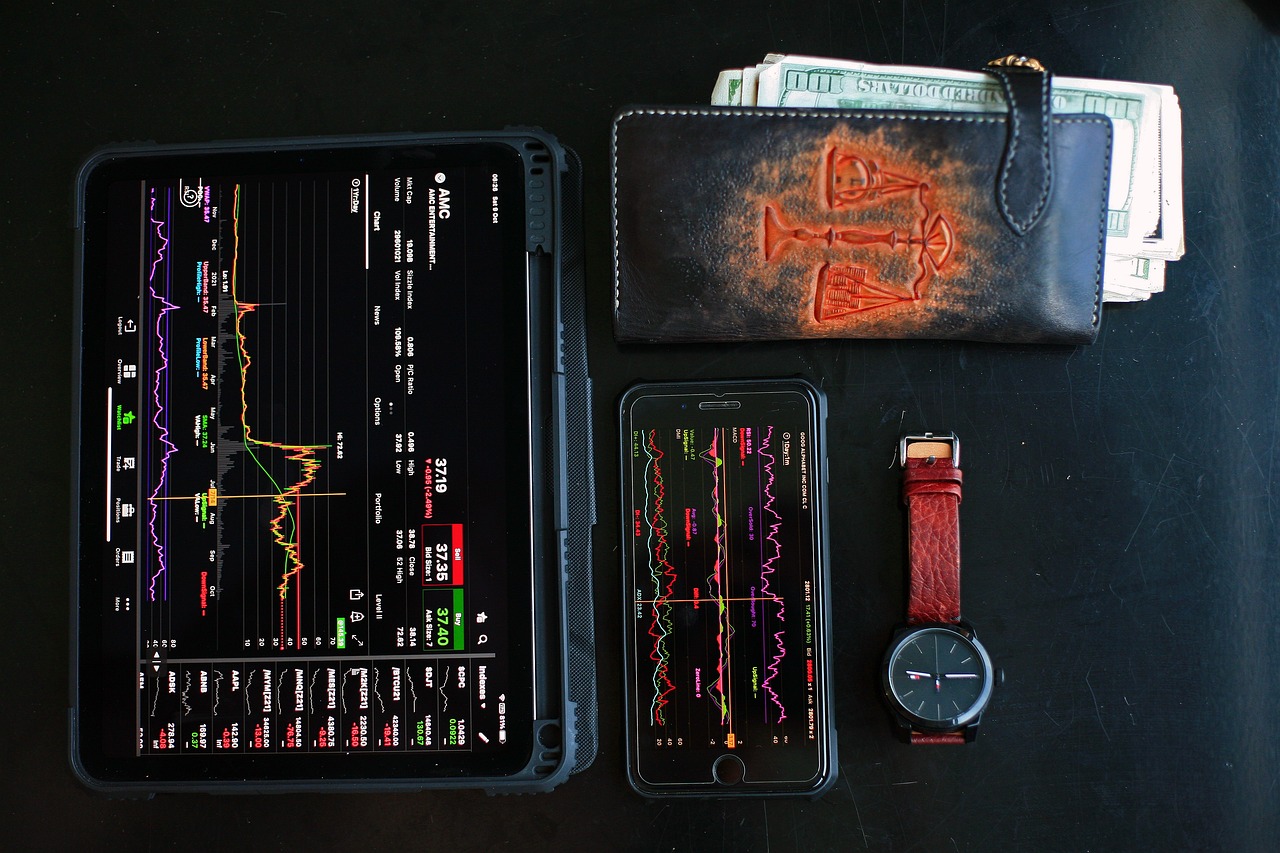
Setting Stop-Loss Orders
Setting stop-loss orders is one of the most critical aspects of trading, especially when using the Average True Range (ATR) as a guide. A stop-loss order is essentially an insurance policy that helps protect your capital from significant losses. Imagine you're driving a car; you wouldn't drive without a seatbelt, right? Similarly, in trading, a stop-loss acts as your seatbelt, keeping you secure in the volatile world of markets. Utilizing ATR for stop-loss placement allows traders to adapt to the current market conditions, ensuring that your stop-loss isn't too tight—risking premature exits—or too loose—leading to excessive losses.
To effectively set your stop-loss orders using ATR, you first need to determine your ATR value for the asset you’re trading. For instance, if the ATR of a stock is 2, this means the stock typically moves $2 in price during a given period. A common approach is to set your stop-loss a certain multiple of the ATR away from your entry point. This multiple can vary based on your risk tolerance and trading strategy.
Here’s a straightforward formula to calculate your stop-loss level:
| Entry Price | ATR Value | Multiplier | Stop-Loss Level |
|---|---|---|---|
| $50.00 | $2.00 | 1.5 | $50.00 - (1.5 * $2.00) $47.00 |
In this example, if you enter a position at $50.00 and the ATR is $2.00, setting your stop-loss at a distance of 1.5 times the ATR would place your stop at $47.00. This gives you enough room to allow for normal price fluctuations while still providing a safety net against larger price swings.
When determining your multiplier, consider the following:
- Market Conditions: In highly volatile markets, you may want to increase your multiplier to avoid being stopped out too early.
- Trading Style: Day traders might opt for a tighter stop-loss, while swing traders may prefer a looser approach.
- Asset Type: Different assets have different volatility profiles; adjust your approach based on the specific characteristics of the asset you’re trading.
Additionally, it’s essential to review and adjust your stop-loss orders regularly. As market conditions change, so should your stop-loss levels. If the ATR value increases, indicating higher volatility, you might need to widen your stop-loss to avoid getting stopped out unnecessarily. Conversely, if the ATR decreases, tightening your stop-loss could help you lock in profits more effectively.
In conclusion, setting stop-loss orders using the ATR not only enhances your risk management strategy but also instills a sense of discipline in your trading. By allowing the market to dictate your stop-loss levels, you can navigate the unpredictable waters of trading with greater confidence and security.
Q1: How often should I recalculate my ATR?
A1: It’s advisable to recalculate your ATR regularly, especially if you notice significant changes in market conditions or if you are entering new trades.
Q2: Can I use ATR for all types of assets?
A2: Yes, ATR can be applied to various asset classes, including stocks, forex, and commodities, making it a versatile tool for traders.
Q3: What if my stop-loss gets hit too frequently?
A3: If you find that your stop-loss is being triggered often, consider adjusting your ATR multiplier or reassessing your trading strategy to ensure it aligns with the current market conditions.

Position Sizing
Position sizing is one of the most critical aspects of trading that can make or break your success in the financial markets. Think of it as the foundation of your trading strategy; without a solid foundation, your entire structure can collapse. When you understand how to effectively size your positions based on the Average True Range (ATR), you can better manage your risk and enhance your potential for profit.
So, how does ATR play into position sizing? Well, the ATR gives you a clear picture of market volatility, which is essential when determining how much capital to risk on a particular trade. The greater the volatility, the more you might consider adjusting your position size to accommodate potential price swings. For example, if the ATR indicates a high level of volatility, you might want to reduce your position size to prevent significant losses. Conversely, in a low-volatility environment, you might feel more comfortable increasing your position size.
To illustrate this concept, let’s take a look at a simple formula that traders often use:
| Risk Amount | ATR | Position Size |
|---|---|---|
| $100 | $2 | 50 shares |
| $100 | $5 | 20 shares |
In this table, if you have a risk amount of $100 and the ATR is $2, you can buy 50 shares. However, if the ATR rises to $5, you can only purchase 20 shares. This example highlights the inverse relationship between ATR and position size: as volatility increases, your position size should decrease to maintain the same level of risk.
Another crucial factor to consider is your overall risk tolerance. Each trader has a different comfort level when it comes to risk, and this should influence your position sizing strategy. For instance, a more conservative trader might decide to risk only 1% of their trading capital on any single trade. In contrast, a more aggressive trader might be willing to risk 2% or even 3%. The key is to find a balance that aligns with your trading style and psychological comfort.
Additionally, it’s essential to remember that position sizing is not a one-size-fits-all approach. Market conditions can change rapidly, and so should your strategy. Regularly reviewing your ATR readings and adjusting your position sizes accordingly can help you stay ahead of the curve. The more you practice this, the more intuitive it will become, allowing you to make quicker, more informed decisions in real-time.
In summary, effective position sizing based on ATR can significantly enhance your trading performance. By understanding the relationship between market volatility and your risk exposure, you can create a more robust trading strategy that not only protects your capital but also positions you for potential gains.
- What is the Average True Range (ATR)?
The ATR is a technical indicator that measures market volatility by calculating the average range between high and low prices over a specified period. - How do I calculate my position size using ATR?
To calculate your position size, divide your risk amount by the ATR value. This will help you determine how many shares or contracts to trade based on your risk tolerance. - Can I use ATR for all types of assets?
Yes, ATR can be applied to various asset classes, including stocks, forex, and commodities, making it a versatile tool for traders.
Frequently Asked Questions
- What is the Average True Range (ATR)?
The Average True Range (ATR) is a technical indicator used to measure market volatility. It provides traders with insights into how much an asset's price can fluctuate over a specific period, helping them gauge the level of risk involved in trading that asset.
- How is ATR calculated?
ATR is calculated using a formula that takes into account the current high, the previous close, and the current low of an asset. By analyzing these values, traders can derive the average price range over a set number of periods, typically 14 days.
- Why is ATR important for traders?
ATR is crucial for traders because it helps them assess market volatility. Understanding the ATR allows traders to make informed decisions regarding their entry and exit points, as well as manage their risk more effectively.
- How can ATR be used for setting stop-loss orders?
Traders can use ATR to determine optimal stop-loss levels. By multiplying the ATR value by a factor (commonly 1.5 or 2), traders can set stop-loss orders at a distance that accommodates normal market fluctuations, reducing the chance of being stopped out prematurely.
- What is the relationship between ATR and position sizing?
Position sizing is closely linked to ATR as it helps traders manage their exposure based on their risk tolerance. By using ATR, traders can calculate the appropriate position size that aligns with their risk management strategy, ensuring they don't overexpose themselves to potential losses.
- Can ATR be used in any market?
Yes, ATR can be applied across various markets, including stocks, forex, and commodities. Its versatility makes it a valuable tool for traders looking to assess volatility and risk, regardless of the asset class they are trading.
- What are the limitations of using ATR?
While ATR is a powerful tool, it does have limitations. It does not indicate the direction of price movement, only the magnitude of volatility. Therefore, it should be used in conjunction with other indicators and analysis methods to create a comprehensive trading strategy.






